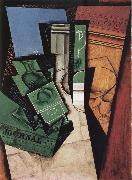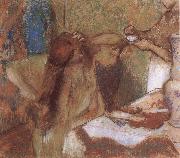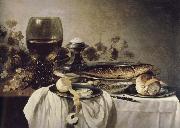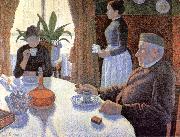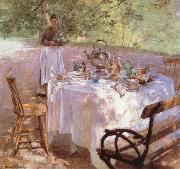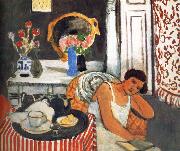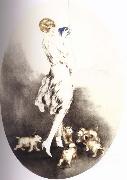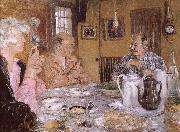Wholesale Oil Painting No Minimum |
|||||||||||
|
|
|||||||||||

|
|||||||||||
|
|
|
||||||||
Gabriel Metsu1629-1667 Dutch Gabriel Metsu Galleries One of his earliest pictures is the "Lazarus" at the Strassburg Museum, painted under the influence of Jan Steen. In 1653 under the influence of Rembrandt he painted "Woman taken in Adultery," a large picture which is now in the Louvre. To the same period belong the "Departure of Hagar," formerly in the Thore collection, and the "Widow's Mite" at the Schwerin Gallery. But he probably observed that sacred art was ill suited to his temper, or he found the field too strongly occupied, and turned to other subjects for which he was better fitted. That at one time he was deeply impressed by the vivacity and bold technique of Frans Hals can be gathered from Lord Lonsdale's picture of "Women at a Fishmonger's Shop." What Metsu undertook and carried out from the first with surprising success was the low life of the market and tavern, contrasted, with wonderful versatility, by incidents of high life and the drawing-room. In no single instance do the artistic lessons of Rembrandt appear to have been lost upon him. The same principles of light and shade which had marked his schoolwork in the "Woman taken in Adultery" were applied to subjects of quite a different kind. A group in a drawing-room, a series of groups in the market-place, or a single figure in the gloom of a tavern or parlour, was treated with the utmost felicity by fit concentration and gradation of light, a warm flush of tone pervading every part, and, with that, the study of texture in stuffs was carried as far as it had been by Ter Borch or Gerard Dou, if not with the finish or the brio of De Hooch. One of the best pictures of Metsu's manhood is the "Market-place of Amsterdam," at the Louvre, respecting which it is difficult to distribute praise in fair proportions, so excellent are the various parts, the characteristic movement and action of the dramatis personae, the selection of faces, the expression and the gesture, and the texture of the things depicted. Equally fine, though earlier, are the "Sportsman" (dated 1661) and the "Tavern" (also 1661) at the Hague and Dresden Museums, and the "Game-Dealer's Shop," also at Dresden, with the painter's signature and 1662. Gabriel Metsu, Man Writing a Letter (1662-1665), Oil on canvas, National Gallery of Ireland, DublinAmong the five examples of the painter in the Wallace Collection, are "The Tabby Cat," and "The Sleeping Sportsman," which cost Lord Hertford £ 3000, is an admirable example technically considered. Among his finest representations of home life are the "Repast" at the Hermitage in St Petersburg; the "Mother nursing her Sick Child" in the Rijksmuseum in Amsterdam; the "Amateur Musicians" at the Hague Gallery; the "Duet" and the "Music Lesson" at the National Gallery, London, and many more examples at nearly all the leading European galleries. Five of his painting are in Dresden, collected by August the Strong. |
||||||||
|
|
||||||||
Breakfast
Breakfast Painting ID:: 2875 |
1660
The Hermitage, St.Petersburg 1660 The Hermitage, St.Petersburg |
|||||||
|
|
||||||||
Hills, Laura CoombsAmerican Miniaturist, 1859-1952 |
||||||||
|
|
||||||||
|
|
Breakfast
Breakfast Painting ID:: 19079 |
pastel, private collection. pastel, private collection. |
||||||
|
|
||||||||
Juan Gris1887-1927 Born in Madrid, he studied mechanical drawing at the Escuela de Artes y Manufacturas in Madrid from 1902 to 1904, during which time he contributed drawings to local periodicals. From 1904 to 1905 he studied painting with the academic artist Jose Maria Carbonero. In 1906 he moved to Paris and became friends with Henri Matisse, Georges Braque, Fernand Leger, and in 1915 he was painted by his friend, Amedeo Modigliani. In Paris, Gris followed the lead of another friend and fellow countryman, Pablo Picasso. His portrait of Picasso in 1912 is a significant early Cubist painting done by a painter other than Picasso or Georges Braque. (Although he regarded Picasso as a teacher, Gertrude Stein acknowledged that Gris "was the one person that Picasso would have willingly wiped off the map.") Portrait of Picasso, 1912, The Art Institute of Chicago.Although he submitted darkly humorous illustrations to journals such as Le Rire, L'assiette au beurre, Le Charivari, and Le Cri de Paris, Gris began to paint seriously in 1910. By 1912 he had developed a personal Cubist style. At first Gris painted in the analytic style of Cubism, but after 1913 he began his conversion to synthetic Cubism, of which he became a steadfast interpreter, with extensive use of papier coll??. Unlike Picasso and Braque, whose Cubist works were monochromatic, Gris painted with bright harmonious colors in daring, novel combinations in the manner of his friend Matisse. In 1924, he first designed ballet sets and costumes for Sergei Diaghilev and the famous Ballets Russes. Gris articulated most of his aesthetic theories during 1924 and 1925. He delivered his definitive lecture, Des possibilit??s de la peinture, at the Sorbonne in 1924. Major Gris exhibitions took place at the Galerie Simon in Paris and the Galerie Flechtheim in Berlin in 1923, and at the Galerie Flechtheim in D??sseldorf in 1925. He died in Boulogne-sur-Seine (Paris) in the spring of 1927 at the age of forty, leaving a wife, Josette, and a son, Georges. |
||||||||
|
|
||||||||
|
|
Breakfast
Breakfast Painting ID:: 36537 |
mk112
1915
92x73cm
mk112 1915 92x73cm |
||||||
|
|
||||||||
Edgar DegasFrench Realist/Impressionist Painter and Sculptor, 1834-1917 French painter, draughtsman, printmaker, sculptor, pastellist, photographer and collector. He was a founder-member of the Impressionist group and the leader within it of the Realist tendency. He organized several of the group exhibitions, but after 1886 he showed his works very rarely and largely withdrew from the Parisian art world. As he was sufficiently wealthy, he was not constricted by the need to sell his work, and even his late pieces retain a vigour and a power to shock that is lacking in the contemporary productions of his Impressionist colleagues. |
||||||||
|
|
||||||||
|
|
Breakfast
Breakfast Painting ID:: 49991 |
mk206
1896-1899
Oil on canvas
96x110cm
mk206 1896-1899 Oil on canvas 96x110cm |
||||||
|
|
||||||||
|
|
||||||||
|
|
Breakfast
Breakfast Painting ID:: 50628 |
mk213
Oil on canvas
mk213 Oil on canvas |
||||||
|
|
||||||||
Paul Signac1863-1935 French Paul Signac Galleries Paul Victor Jules Signac was born in Paris on November 11, 1863. He followed a course of training in architecture before deciding at the age of 18 to pursue a career as a painter. He sailed around the coasts of Europe, painting the landscapes he encountered. He also painted scenes of cities in France in his later years. In 1884 he met Claude Monet and Georges Seurat. He was struck by the systematic working methods of Seurat and by his theory of colours and became Seurat's faithful supporter. Under his influence he abandoned the short brushstrokes of impressionism to experiment with scientifically juxtaposed small dots of pure colour, intended to combine and blend not on the canvas but in the viewer's eye, the defining feature of pointillism. Many of Signac's paintings are of the French coast. He left the capital each summer, to stay in the south of France in the village of Collioure or at St. Tropez, where he bought a house and invited his friends. In March 1889, he visited Vincent van Gogh at Arles. The next year he made a short trip to Italy, seeing Genoa, Florence, and Naples. The Port of Saint-Tropez, oil on canvas, 1901Signac loved sailing and began to travel in 1892, sailing a small boat to almost all the ports of France, to Holland, and around the Mediterranean as far as Constantinople, basing his boat at St. Tropez, which he "discovered". From his various ports of call, Signac brought back vibrant, colourful watercolors, sketched rapidly from nature. From these sketches, he painted large studio canvases that are carefully worked out in small, mosaic-like squares of color, quite different from the tiny, variegated dots previously used by Seurat. Signac himself experimented with various media. As well as oil paintings and watercolours he made etchings, lithographs, and many pen-and-ink sketches composed of small, laborious dots. The neo-impressionists influenced the next generation: Signac inspired Henri Matisse and Andr?? Derain in particular, thus playing a decisive role in the evolution of Fauvism. As president of the Societe des Artistes Ind??pendants from 1908 until his death, Signac encouraged younger artists (he was the first to buy a painting by Matisse) by exhibiting the controversial works of the Fauves and the Cubists. |
||||||||
|
|
||||||||
|
|
Breakfast
Breakfast Painting ID:: 54122 |
mk235
c.1886/87
Oil on canvas
89x115cm
mk235 c.1886/87 Oil on canvas 89x115cm |
||||||
|
|
||||||||
Palmer, PaulineAmerican, 1867-1938 |
||||||||
|
|
||||||||
|
|
Breakfast
Breakfast Painting ID:: 54349 |
mk235
1887
Oil on canvas
77x107cm
mk235 1887 Oil on canvas 77x107cm |
||||||
|
|
||||||||
Henri MatisseFrench Fauvist Painter and Sculptor, 1869-1954 Henri Matisse is considered the most important French artist of the 20th century and, along with Pablo Picasso, one of the most influential modernist painters of the last century. Matisse began studying drawing and painting in the 1890s. A student of the masters of Post-Impressionism, Matisse later made a reputation for himself as the leader of a group of painters known as Les Fauves. An ironic label given to them by a critic, the name reflected Matisse's aggressive strokes and bold use of primary colors. In 1905 Matisse gained sudden fame with three paintings, including Woman with the Hat, purchased by the wealthy American ex-patriot Gertrude Stein. Beyond painting, he worked with lithographs and sculpture, and during World War II he did a series of book designs. Later in his career he experimented with paper cutouts and designed decorations for the Dominican chapel in Vence, France. Along with Picasso, |
||||||||
|
|
||||||||
|
|
Breakfast
Breakfast Painting ID:: 58003 |
mk260 1920 Oil on canvas years 64.1 x 73.8 cm mk260 1920 Oil on canvas years 64.1 x 73.8 cm |
||||||
|
|
||||||||
Louis LcartFrench (1880-1950) Louis Icart was born in Toulouse, France. He began drawing at an early age. He was particularly interested in fashion, and became famous for his sketches almost immediately. He worked for major design studios at a time when fashion was undergoing a radical change-from the fussiness of the late nineteenth century to the simple, clingy lines of the early twentieth century. He was first son of Jean and Elisabeth Icart and was officially named Louis Justin Laurent Icart. The use of his initials L.I. would be sufficient in this household. Therefore, from the moment of his birth he was dubbed 'Helli'. The Icart family lived modestly in a small brick home on rue Traversi??re-de-la-balance, in the culturally rich Southern French city of Toulouse, which was the home of many prominent writers and artists, the most famous being Henri de Toulouse-Lautrec. Icart fought in World War I. He relied on his art to stem his anguish, sketching on every available surface. It was not until his move to Paris in 1907 that Icart would concentrate on painting, drawing and the production of countless beautiful etchings, which have served (more than the other mediums) to indelibly preserve his name in twentieth century art history. When he returned from the front he made prints from those drawings. The prints, most of which were aquatints and drypoints, showed great skill. Because they were much in demand, Icart frequently made two editions (one European, the other American) to satisfy his public. These prints are considered rare today, and when they are in mint condition they fetch high prices at auction. Art Deco, a term coined at the 1925 Paris Exposition des Arts Decoratifs, had taken its grip on the Paris of the 1920s. By the late 1920s Icart, working for both publications and major fashion and design studios, had become very successful, both artistically and financially. His etchings reached their height of brilliance in this era of Art Deco, and Icart had become the symbol of the epoch. Yet, although Icart has created for us a picture of Paris and New York life in the 1920s and 1930s, he worked in his own style, derived principally from the study of eighteenth-century French masters such as Jean Antoine Watteau, François Boucher and Jean Honor?? Fragonard. In Icart's drawings, one sees the Impressionists Degas and Monet and, in his rare watercolors, the Symbolists Odilon Redon and Gustave Moreau. In fact, Icart lived outside the fashionable artistic movements of the time and was not completely sympathetic to contemporary art. Nonetheless, his Parisian scenes are a documentation of the life he saw around him and they are nearly as popular today as when they were first produced. In 1914 Icart had met a magical, effervescent eighteen-year-old blonde named Fanny Volmers, at the time an employee of the fashion house Paquin. She would eventually become his wife and a source of artistic inspiration for the rest of his life. |
||||||||
|
|
||||||||
|
|
Breakfast
Breakfast Painting ID:: 63189 |
mk286 34.2 x 44.4 cm 1927 Nian mk286 34.2 x 44.4 cm 1927 Nian |
||||||
|
|
||||||||
Edouard Vuillard1868-1940 French Edouard Vuillard Galleries Jean-Edouard Vuillard, the son of a retired captain, spent his youth at Cuiseaux (Saone-et-Loire); in 1878 his family moved to Paris in modest circumstances. After his father\'s death, in 1884, Vuillard received a scholarship to continue his education. In the Lycee Condorcet Vuillard met Ker Xavier Roussel (also a future painter and Vuillard\'s future brother in law), Maurice Denis, musician Pierre Hermant, writer Pierre Veber and Lugne-Poe. On Roussel\'s advice he refused a military career and entered the Ecole des Beaux-Arts, where he met Pierre Bonnard. In 1885, Vuillard left the Lycee Condorcet and joined his closest friend Roussel at the studio of painter Diogene Maillart. There, Roussel and Vuillard received the rudiments of artistic training. |
||||||||
|
|
||||||||
|
|
Breakfast
Breakfast Painting ID:: 66035 |
mk288 1913 glue linen painting 184 x 109cm private collection mk288 1913 glue linen painting 184 x 109cm private collection |
||||||
|
|
||||||||
Edouard Vuillard1868-1940 French Edouard Vuillard Galleries Jean-Edouard Vuillard, the son of a retired captain, spent his youth at Cuiseaux (Saone-et-Loire); in 1878 his family moved to Paris in modest circumstances. After his father\'s death, in 1884, Vuillard received a scholarship to continue his education. In the Lycee Condorcet Vuillard met Ker Xavier Roussel (also a future painter and Vuillard\'s future brother in law), Maurice Denis, musician Pierre Hermant, writer Pierre Veber and Lugne-Poe. On Roussel\'s advice he refused a military career and entered the Ecole des Beaux-Arts, where he met Pierre Bonnard. In 1885, Vuillard left the Lycee Condorcet and joined his closest friend Roussel at the studio of painter Diogene Maillart. There, Roussel and Vuillard received the rudiments of artistic training. |
||||||||
|
|
||||||||
|
|
Breakfast
Breakfast Painting ID:: 66140 |
Mk288 1930 board paintings 75 x 100cm at present private Tibet Mk288 1930 board paintings 75 x 100cm at present private Tibet |
||||||
|
|
||||||||
Edouard Vuillard1868-1940 French Edouard Vuillard Galleries Jean-Edouard Vuillard, the son of a retired captain, spent his youth at Cuiseaux (Saone-et-Loire); in 1878 his family moved to Paris in modest circumstances. After his father\'s death, in 1884, Vuillard received a scholarship to continue his education. In the Lycee Condorcet Vuillard met Ker Xavier Roussel (also a future painter and Vuillard\'s future brother in law), Maurice Denis, musician Pierre Hermant, writer Pierre Veber and Lugne-Poe. On Roussel\'s advice he refused a military career and entered the Ecole des Beaux-Arts, where he met Pierre Bonnard. In 1885, Vuillard left the Lycee Condorcet and joined his closest friend Roussel at the studio of painter Diogene Maillart. There, Roussel and Vuillard received the rudiments of artistic training. |
||||||||
|
|
||||||||
|
|
Breakfast
Breakfast Painting ID:: 93264 |
1894(1894)
Medium oil on cardboard
Dimensions 26.9 x 22.9 cm (10.6 x 9 in)
cjr 1894(1894) Medium oil on cardboard Dimensions 26.9 x 22.9 cm (10.6 x 9 in) cjr |
||||||
|
|
||||||||
|
Edouard Vuillard 1868-1940 French Edouard Vuillard Galleries Jean-Edouard Vuillard, the son of a retired captain, spent his youth at Cuiseaux (Saone-et-Loire); in 1878 his family moved to Paris in modest circumstances. After his father\'s death, in 1884, Vuillard received a scholarship to continue his education. In the Lycee Condorcet Vuillard met Ker Xavier Roussel (also a future painter and Vuillard\'s future brother in law), Maurice Denis, musician Pierre Hermant, writer Pierre Veber and Lugne-Poe. On Roussel\'s advice he refused a military career and entered the Ecole des Beaux-Arts, where he met Pierre Bonnard. In 1885, Vuillard left the Lycee Condorcet and joined his closest friend Roussel at the studio of painter Diogene Maillart. There, Roussel and Vuillard received the rudiments of artistic training. Breakfast 1894(1894) Medium oil on cardboard Dimensions 26.9 x 22.9 cm (10.6 x 9 in) cjr |
||||||||
|
|
||||||||
|
Prev Next
|
||||||||
|
|
||||||||
|
Related Paintings to Edouard Vuillard :. |
||||||||
|
|
||||||||
|
CONTACT US |



